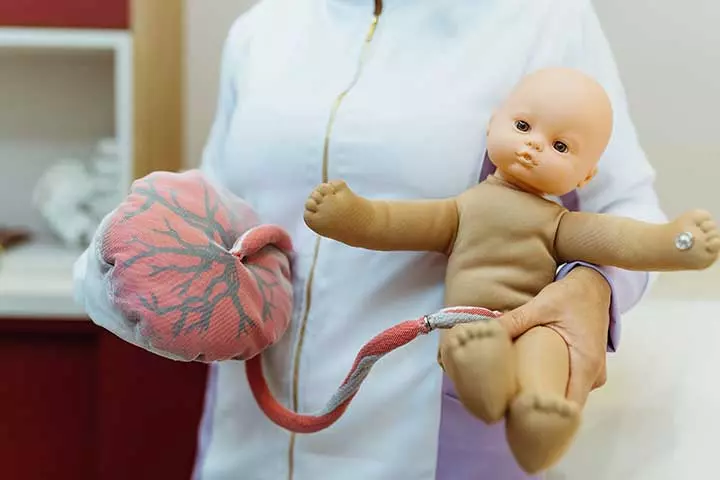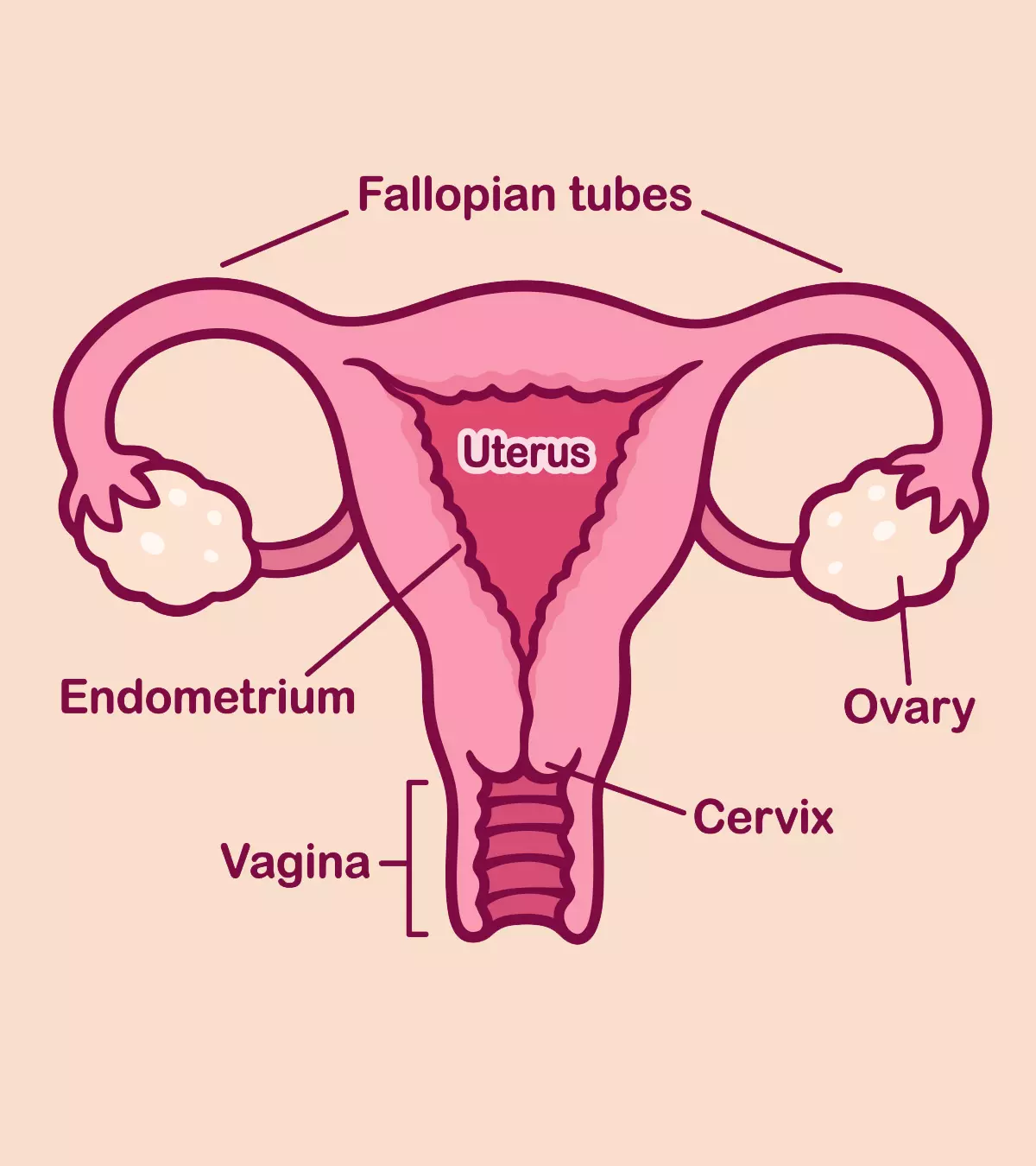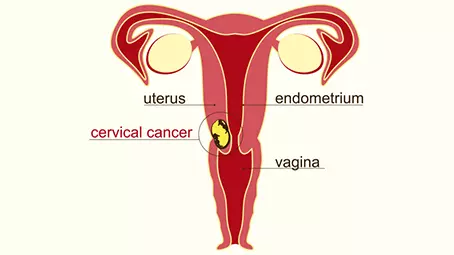
Image: Shutterstock
Lotus birth, also known as umbilical cord non-severance, is an alternative birth practice of leaving the umbilical cord and the placentaiA temporary organ that provides the child with oxygen and nutrients with the baby after childbirth until it detaches naturally (1). It can take several days or even a week or more for the placenta and cord to separate (2). The practice of lotus birth has supporters and critics, with some arguing that it has health benefits for the mother and the baby, while others say it poses significant risks. Scroll through to understand the risks and benefits of lotus birth and explore the evidence behind this uncommon practice.

Key Pointers
- Lotus birth is keeping the placenta and umbilical cord attached to the baby until it falls off naturally.
- This helps strengthen the mother-child bond and make the baby more peaceful, but the claims lack evidence.
- Lotus birth may increase the risk of infections such as omphalitis and hepatitis in the baby.
- It is essential to watch the baby’s behavior and health following a lotus birth and seek timely medical attention.
Is Lotus Birth Safe?
The uncommon practice of lotus birth is not well understood due to insufficient research. As the placenta becomes non-viable after childbirth, there may be a risk of infection, which may also spread to the baby. Due to a lack of medical evidence, the safety of this procedure is not established (1).
How Did Lotus Birth Practice Start?
The practice of lotus birth was initiated by a woman named Clair Lotus Day in 1974. She observed how a chimpanzee retained her baby’s placenta until it dried up and detached naturally. After that, she adopted this method in humans, presuming it could improve bonding and attachment post-birth (3).
 Quick fact
Quick factHow Does The Lotus Birth Method Work?

Image: IStock
Lotus birth is carried out in the following manner (4):
- The baby is placed on the mother’s chest, and the placenta is allowed to deliver naturally without using oxytocic medicinesiMedications that stimulate uterine activity and induce labor .
- The umbilical cord is not clamped, so the veins naturally constrict, stopping blood circulation in the placenta within five minutes.
- The placenta is then washed, salted, and covered in absorbent material. Finally, a mixture of herbs is used to dry the placenta and to prevent foul odor and infection.
- The placenta is kept in an airy bag until the umbilical cord separates from the baby.
A mother shares the lotus birth experience of her daughter, Maya. She recalls, “After 20-30 minutes waiting in the birthing pool I suggested that gravity might help placenta out so I transferred to the birthing stool they brought with them. We waited some more then eventually I pushed my placenta out. I was doing a full lotus birth, the practice of non-severance of the placenta from my baby. We chose to wait until it naturally falls off. So, my doula, Irina, brought a bowl of water where placenta was washed right next to the baby. Irina proceeded to place some salt on placenta and poured drops of Lavender pure essential oil afterwards. Later on I added dried rosemary. I continued to add salt, Lavender and rosemary everyday on each side of the placenta (i).”
 Quick fact
Quick factWhy Do Some Parents Opt For Lotus Birth?
For some mothers, motherhood is a deeply transformative process that inspires them to seek a more natural approach to childbirth. As part of this approach, some may choose lotus birth to honor the natural process of childbirth and connect with their baby. This choice may be influenced by spiritual beliefs that view the placenta and umbilical cord as integral parts of the baby rather than medical waste. As a result, these mothers believe that the baby should have control over when to let go of them when they are ready (5).
In the context of holistic birth, which emphasizes the importance of the mind, body, and spirit connection during birthing, some women may choose lotus birth as part of their birth plan. This approach emphasizes the gentle, non-invasive nature of lotus birth and its potential to support a natural and holistic birthing experience.
Lotus birth may also be combined with other practices, such as gentle birth and unassisted birth, provided those involved are well-informed and prepared. However, it is important to note that unassisted birth should only be attempted by those who have a deep understanding of the risks and are fully prepared to manage any potential complications.
What Is The Difference Between Lotus Birth And Delayed Cord Clamping?
(DCC) is where the umbilical cord is left attached to the baby for 30 to 60 seconds after birth (6). In lotus birth, the cord is left uncut until it falls off naturally, which may take about three to ten days (2).
DCC is recognized as a beneficial technique for newborns due to the following reasons (6):
- Aids in the blood transfer from the placenta to the baby, thereby improving iron levels and preventing iron deficiency anemia in the babies in the first year of life.
- Assists immunoglobuliniProtective proteins produced by the body’s immune system and stem-cell transfer, which is helpful for organ and tissue repair.
- Minimizes the risk of necrotizing enterocolitisiAn inflammatory condition leading to the death of intestines and intraventricular hemorrhageiBleeding in the fluid-filled areas of the brain .
On the other hand, lotus birth lacks enough research on its health benefits and safety (1). It may thus not be as widely accepted as DCC.
What Are The Benefits Of Lotus Birth?
Although the lotus birth benefits may not be scientifically proven, the perceived benefits, according to a study, include (4):
- Newborns appear calmer and more peaceful after lotus birth.
- The mothers and the babies can have a better breastfeeding experience.
- Keeping the placenta attached could help in better mother-child bonding.
- May help prevent anemia in newborns.
What Are The Risks Of Lotus Birth?

Image: Shutterstock
The risks of lotus birth outweigh its benefits; therefore, not many doctors recommend it. According to limited studies, the risks involved in a lotus birth include the following:
- Omphalitis, an infection of the umbilical cord and the surrounding tissues in the newborn (1).
- Hepatitis, an increase in the levels of aspartateiAn amino acid synthesized by mammals and alanine aminotransferaseiAn enzyme found in the liver and the kidney , leading to persistent newborn jaundice in the infant (7).
Lotus birth cannot be practiced if your baby is born premature or needs NICU admission for other reasons. In such cases, the neonatologist would prefer to keep the environment around the baby sterile. Hence, it is desirable to cut the baby’s umbilical cord.
How To Care For The Placenta After A Lotus Birth?

Image: Shutterstock
You may follow these tips and safety measures to care for the placenta after a lotus birth (8).
- Postpartum, keep the placenta close to the baby’s body to prevent accidental pulling.
- Treat the placenta and the umbilical cord with salt, herbs, and essential oils to help prevent infection and foul odor. Then, store it in a placenta bag (4).
- Choose loose and front-open clothes for the baby.
- Be careful while lifting, feeding, and cuddling with your baby.
 Quick tip
Quick tipWhen To Seek Medical Attention?
Following are the signs of concern to seek immediate medical attention (8):
- Swelling and redness in and around the umbilical cord
- A feeling of warmth in the cord and the surrounding area
- Fever in babies with a body temperature of 100oF or above
- Baby does not feed properly, with less than six to eight feedings on the first two days and less than eight to 12 on the second and third days
- Baby sleeping more than usual
Frequently Asked Questions
1. Can I have a lotus birth with a c-section?
The possibility of a lotus birth may decrease with a c-section (9). But in some cases, the doctor may be able to maintain an intact placenta even after a cesarean (5). Discuss your preferences before your delivery; and know that in case of a cesarean section, umbilical cord clamping may be at the doctor’s discretion based on your overall health.
2. Can I have a lotus birth at the hospital?
Yes. Although initially, lotus births were performed at home with the help of a midwife or a doula, they are now also done at hospitals (4).
3. Does lotus birth smell?
There may be a slight odor as the placenta is left to detach naturally in a Lotus birth for a few days. Good hygiene and maintenance can help prevent any potential odor (10).
Although lotus birth is believed to support the spiritual connection and benefit the emotional bonding between a mother and the child, it also holds some risks. The potential for infection and the lack of scientific evidence to support its benefits should not be forgotten. Due to a lack of enough research, it is essential for expectant parents to thoroughly understand the concept and consider the risks and benefits of lotus birth after consulting with their OB/GYN to make a safe and informed decision.
Infographic: Taking care of your placenta after a lotus birth
While lotus birth may not be a common practice, it is considered a sacred and spiritual tradition in some cultures. So if you have opted for this method, it is essential to properly care for the placenta to ensure the newborn’s safety and health. This infographic will guide you with tips and measures to keep your baby safe.
Some thing wrong with infographic shortcode. please verify shortcode syntax
Personal Experience: Source
MomJunction articles include first-hand experiences to provide you with better insights through real-life narratives. Here are the sources of personal accounts referenced in this article.
i. Sarah Maya’s lotus birth.https://birthingbeyond.blogspot.com/2014/04/sarah-mayas-lotus-birth.html
References
- Lydia Lanniet al.; (2025); Cutting Ties With an Old Friend: Omphalitis and Bacteremia With Umbilical Cord Nonseverance.
https://publications.aap.org/pediatrics/article/147/4/e2020008938/180829/Cutting-Ties-With-an-Old-Friend-Omphalitis-and - 7 Alternative Birth Practices & What You Should Know About Them.
https://www.healthychildren.org/English/ages-stages/prenatal/Pages/7-Alternative-Birth-Practices-What-You-Should-Know-About-Them.aspx - Laura A.Zinsser; (2018); Lotus birth a holistic approach on physiological cord clamping.
https://www.sciencedirect.com/science/article/abs/pii/S1871519217304730?via%3Dihub - Ilknur M Gönenç et al.; (2019); Qualitative Study on the Experience of Lotus Birth.
https://www.researchgate.net/publication/336100016_Qualitative_Study_on_the_Experience_of_Lotus_Birth - Kimberly K. Monroe et al.; (2018); Lotus Birth: A Case Series Report on Umbilical Nonseverance.
https://journals.sagepub.com/doi/10.1177/0009922818806843 - Delayed Umbilical Cord Clamping After Birth.
https://www.acog.org/clinical/clinical-guidance/committee-opinion/articles/2025/12/delayed-umbilical-cord-clamping-after-birth - Antonella Tricaricoet al.; (2017); Lotus Birth Associated With Idiopathic Neonatal Hepatitis.
https://www.pediatr-neonatol.com/article/S1875-9572(16)30075-4/fulltext - Lotus Birth/Umbilical NonSeverance: What to Expect.
https://www.med.umich.edu/1libr/Pediatrics/LotusBirthHandout.pdf - Lotus Birth Patient Information Brochure.
https://www.sahealth.sa.gov.au/wps/wcm/connect/7d26c770-9670-4f37-9e8a-2ca0f4061662/Lotus+Birth+brochure_V1_0.pdf?MOD=AJPERES&CACHEID=ROOTWORKSPACE-7d26c770-9670-4f37-9e8a-2ca0f4061662-n.tPTYf - Kyejo Willbroad et al.; (2025); Do not detach the placenta from my baby’s cord-Lotus birth case series from Tanzania tertiary hospital.
https://www.ncbi.nlm.nih.gov/pmc/articles/PMC9568734/
Lotus Birth Explained: Benefits, Risks & Care Tips
Watch this video to explore lotus birth: benefits like improved bonding and a peaceful newborn, plus infection risks and essential placenta care tips. Watch now to learn more!
Community Experiences
Join the conversation and become a part of our nurturing community! Share your stories, experiences, and insights to connect with fellow parents.
Read full bio of Dr. Swati Chitnis
Read full bio of Aneesha Amonz
Read full bio of Rebecca Malachi
Read full bio of Reshmi Das

















